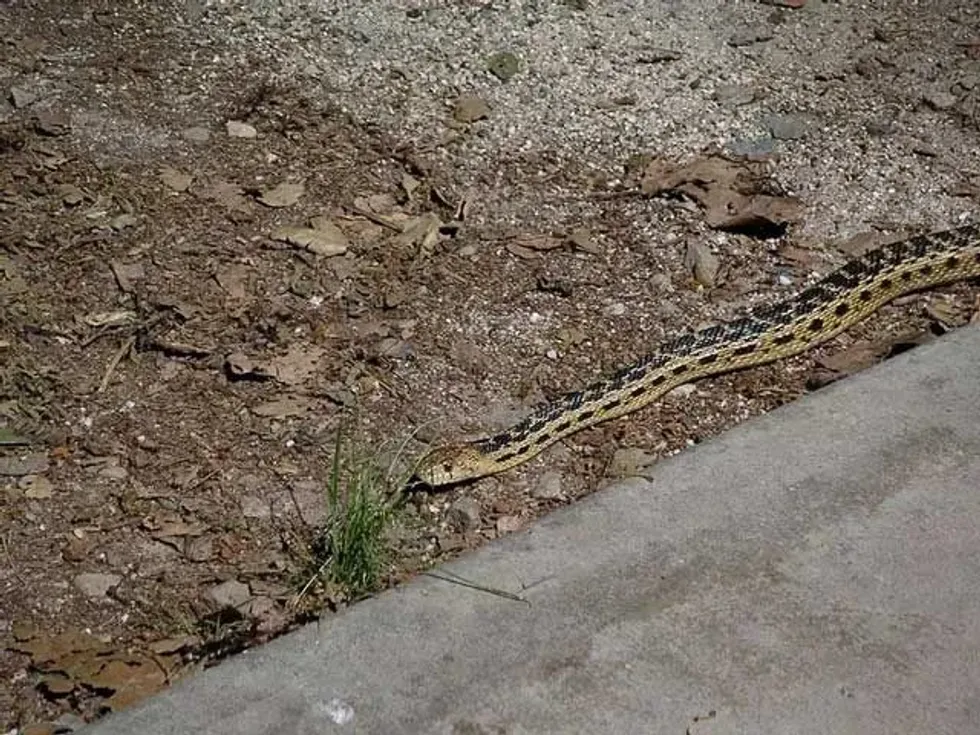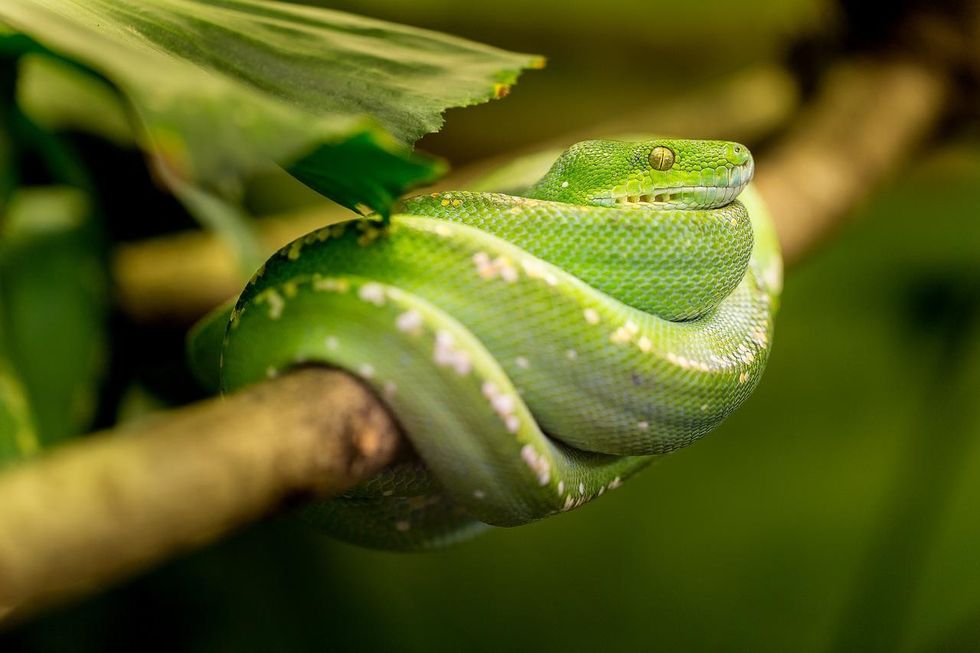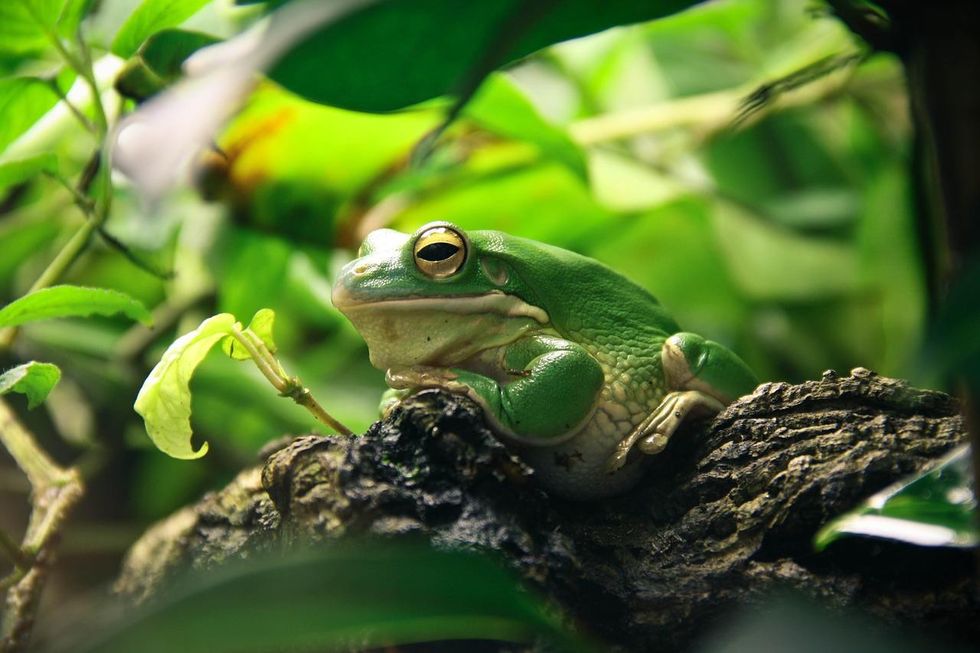The Pacific Gopher Snake (Pituophis catenifer catenifer) is a non-venomous snake that is found in parts of North America.
These non-venomous snakes feed on small mammals and as such play an extremely important role in controlling the population of rodents and pests which may harm the crops in the field. This is the reason that most farmers in North Dakota regard this snake as being extremely useful to protect their crops from pests.
The Pacific Gopher Snake (Pituophis catenifer catenifer) can thrive in a wide range of habitats including deserts, coniferous forests, woodlands, and semi-arid regions.
The Pacific Gopher is an interesting snake with an interesting story. Read and learn about these gopher snakes in this article. Afterward, do check our other articles on the green anaconda and Olive Ridley sea turtle as well.
Pacific Gopher Snake Interesting Facts
What type of animal is a Pacific Gopher Snake?
The Pacific Gopher Snake (Pituophis catenifer catenifer) belongs to the Colubridae family. Gopher snakes have a lifespan of around 14 years. These Pacific Gophers like to live a solitary life and prey on other rodents on their own.
What class of animal does a Pacific Gopher Snake belong to?
The Pacific Gopher Snake (Pituophis catenifer catenifer) belongs to the Reptilia class of animals.
How many Pacific Gopher Snakes are there in the world?
The Pacific Gopher Snake (Pituophis catenifer catenifer) can be found in various habitats in the United States. There is no exact count on the total number of these snakes present in the wild, but it is estimated that their population across the world is stable and thriving.
Where does a Pacific Gopher Snake live?
These species of gopher snake are mainly found in the Pacific Gopher Snake habitat in farms that are near semi-arid brushy regions of North America. From the West Coast to the southern coast of California, San Diego Gopher Snakes are found up to elevations of 2000 ft (609.6 m).
It is also found in British Columbia, Mexico, and Alberta. These rattlesnakes can adapt to a wide variety of habitats as well.
What is a Pacific Gopher Snake's habitat?
Pacific Gopher snakes can be found in an extensive range of habitats that includes deserts, coniferous forest, bushlands, woodlands, and semi-arid regions. The Pacific Gopher Snake geographic range extends to a variety of habitats all along the West Coast of the US.
Who do Pacific Gopher Snakes live with?
These snakes are not social creatures. These snakes do not live in packs, but they may come in groups during predating. Members of this species resembling rattlesnakes come together during the mating season or while hibernating.
How long does a Pacific Gopher Snake live?
The average lifespan of a Pacific Gopher snake is 12-15 years. The longest living creature of this species lived till the age of 33 years.
How do they reproduce?
These gopher snakes are oviparous species in terms of reproduction. This species lays eggs in the months of June to August, which are hatched in 2-2.5 months.
These snakes may use the winter brumation period to improve their breeding success. The average litter size is 12-14 eggs. After the eggs hatch, the young Pacific Gopher snakes are born who are up to 13-17 in (33-43.2 cm) long as soon as they are born.
What is their conservation status?
These species of gopher snakes are considered as species of Least Concern by the IUCN Red List. But some states in the United States have laws to protect them as their population is believed to be threatened in these regions.
Pacific Gopher Snake Fun Facts
What do Pacific Gopher Snakes look like?
A Pacific Gopher snake has a base color ranging between a dark shade of brown and yellow. It also has gray sides, with brown colored spots. There are anywhere between 40-100 spots on the body and 14-33 spots on the tail.
Alternating brown and black spots are present on the side of the body. It has scales on its body which sports a narrow-shaped head, that is still broader than the neck.
The back of its neck is dark brown. The ventral side is yellowish cream in color and has dark spots. Their tail vibrations often lead to confusing them with the venomous rattlesnake.
How cute are they?
These breeding reptiles are considered adorable to animal lovers. Although these reptiles are non-venomous, these wild snakes can bite if they are irritated.
How do they communicate?
Pacific Gopher Snakes shake their tails to confuse their predators. These reptiles communicate by leaving or collecting pheromones.
How big is a Pacific Gopher Snake?
Pacific Gopher Snakes are large-sized and strongly built snakes. The Pacific Gopher Snake size can extend up to 7 ft (2.1 m) in length, which makes it one of the biggest snake species in Mexico.
How fast can a Pacific Gopher Snake move?
Pacific Gopher Snakes are extremely swift and agile when it comes to moving around but there are no exact details available regarding their speed in the wild.
How much does a Pacific Gopher Snake weigh?
The average weight of a Pacific Gopher snake is 2.2-3.3 lb (1-1.5 kg). But there have been snakes weighing between 8-10 lb (3.6-4.5 kg).
What are the male and female names of the species?
The males and females are known as male Pacific Gopher Snake and female Pacific Gopher Snake respectively.
What would you call a baby Pacific Gopher Snake?
A baby Pacific Gopher Snake is known as a hatchling, snakelet, or neonate.
What do they eat?
These snakes eat rodents, other smaller snakes, lizards, frogs, birds and their eggs, small mammals, gophers, insects, and amphibians.
Are they poisonous?
Pacific Gopher Snakes do not have poisonous venom. So these wild snakes cannot hurt humans or cause their death. Gopher Snakes are known to attack with closed mouths.
Would they make a good pet?
Yes, these species of snakes can be very good pets. Pituophis catenifer catenfier do not have venom glands and as such Gopher Snakes are non-venomous. Gopher Snakes are not very aggressive and do not bite easily. They consider biting as their last resort. If Gopher Snakes are well taken care of, they can live up to 30 years.
Did you know...
Typical Gopher Snakes can be dangerous. As Gopher Snakes are non-poisonous, they are known to attack with closed mouths.
What is the difference between the Pacific Gopher Snake, Bull Snake, and Pine Snake?
The Bull Snake, Pine Snake and Gopher Snake are all different names assigned to a single species which is Pituophis melanoleucus or Pituophis catenifer. They are variations under the same snake species category.
How to pet a Pacific Gopher Snake
While this species is not venomous as such, due care must be taken when you try and adopt a Pacific Gopher Snake. The Pacific Gopher Snake bite is not extremely harmful but it can cause some swelling and pain.
You must have a complete understanding of Pacific Gopher Snake care before getting one for yourself. Gopher Snakes feed once every two weeks so this must be taken into account when feeding them to avoid them becoming overweight.
Here at Kidadl, we have carefully created lots of interesting family-friendly animal facts for everyone to discover! Learn more about some other reptiles from our sand lizard facts and bog turtle facts pages.
You can even occupy yourself at home by coloring in one of our free printable great basin gopher snake coloring pages.










